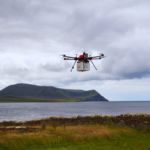For the aviation industry, its regulators and the traveling public, there are perhaps three great technological challenges: to reduce the environmental impact of flying, to safely exploit the potential of drone flights, and to safely and efficiently accommodate an ever-growing volume of air traffic, both in the sky and at our airports. These threads can only be safely knit together into a coherent system with refinement of air traffic control, or ATC.
In ATC, a broad thrust of development might be described as “digitalisation”; the term is familiar in most fields of modern society, but given the imperative to maintain safety, in aviation the transition from traditional, well-proven analogue systems must be seamless.
Three 2024 developments characterise this transition, all involving Frequentis, the Austria-based supplier of ATC communication and information systems. For the US Federal Aviation Administration, Frequentis will transition existing national air space radio control equipment from the current analogue system to digital internet protocol communication.
In Lithuania, Frequentis will introduce a digital, automated, risk assessment tool to improve air traffic management of uncrewed flights.
And, at Munich airport Frequentis will trial a virtual control tower system, to test its suitability for larger airports; possible applications setting up a virtual tower as an interim system during an upcoming renovation of the control tower (main image).
As digitalisation smooths the path to automation and the exploitation of increasingly capable systems deploying techniques associated with so-called artificial intelligence, or AI, FINN asked Frequentis chief executive Norbert Haslacher, pictured, about how AI will transform ATC.

Says Haslacher: “AI is ideal for supporting productivity and decision-making to improve situational awareness in critical situations by detecting performance gaps and detecting potential threats and anomalies earlier.
“When it comes to integrating drones into the airspace, AI-driven systems can effectively manage the safe coexistence of both manned and unmanned aircraft thanks to the automation of operational processes. We have for example recently added such an automation tool to our drone traffic management system for Lithuania, via our sister company skyzr, which will automate risk assessments, speeding up the drone flight approval process.
“We have also been working on AI audio enhancement with our cooperation partner, Augmented Hearing, based in Denmark. The AI tool will improve speech comprehension in noisy environments by suppressing radio noise, significantly reducing the controllers cognitive workload when managing air traffic.
But, he stresses, AI systems can help human controllers but not replace them: “Although AI excels in executing repetitive tasks, it is not designed to address logical problems or handle situations, which don’t occur very often. This is why human controllers will always be essential to the decision-making process.
“An example of a mature AI application is the computer vision in a digital control tower, where objects on the runway are automatically detected and highlighted on the screen. This reduces air traffic controller workload, adds information that conventionally requires the controller to process such information and can make the controller’s job safer.
“Another example of AI as a support tool is Automatic Speech Recognition, which will be used to improve our recording system GuardX in order to be more efficient in case of an incident.”
Trust the system
As for whether or not human pilots will come to trust AI control systems, Haslacher readily acknowledges that promises of precision and efficiency will be met with some skepticism but again stresses this supporting role:
“AI systems are designed to support controllers and not to replace them. Such systems prioritise safety and efficiency, utilising advanced algorithms and real-time data analysis to optimise flight paths and prevent collisions by early warnings to the controllers. Additionally, AI systems can process vast amounts of information much faster and more accurately than humans, enabling them to detect and respond to potential hazards or deviations from flight plans with greater precision and speed. AI systems are also continuously learning and improving through experience, making them increasingly reliable over time.”
Lastly, he also acknowledges the gap between the potential for AI technology to function across vast regions and the enduring reality that politicians and regulators remain wedded to notions of control with national air space. Says Haslacher: “Regulators and politicians should support the introduction of AI in air traffic management (ATM) due to its potential to significantly enhance safety, efficiency, and cost-effectiveness. By leveraging AI capabilities, ATM systems can optimise air traffic flow, reduce delays and improve airspace capacity, leading to economic benefits and increased competitiveness in the global aviation industry.
“The predictive capabilities and automated responses to potential hazards would improve safety in ATM, while automating traffic flow would increase capacity and efficiency, translating to economic benefits for both the aviation industry and the wider economy in general.”
He adds: “AI-driven solutions can also contribute to environmental sustainability through reduced fuel consumption and emissions. Embracing AI in ATM ensures future-readiness, promotes international standards, and fosters collaboration among aviation stakeholders, ultimately leading to safer, more efficient, and more sustainable air transportation systems on a global scale.”
Subscribe to the FINN weekly newsletter

